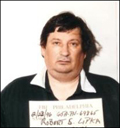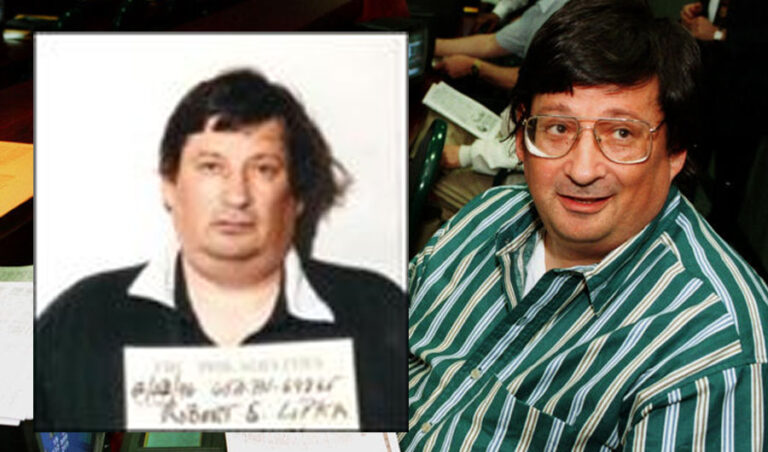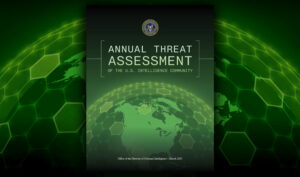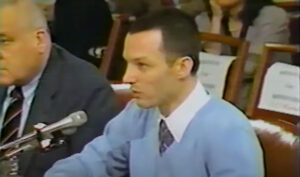
New Book about the Robert Lipka case, aka the “Rip Van Winkle” spy.
He was an NSA employee who spied for the KGB in the 1960s, went dormant, but got caught in the 1990s. His words:
“When I first got into it, I didn’t realize what it all meant. As I was doing it, I did come to realize and I did try to withdraw numerous times. I’ve lived a life of terror for 30 years that this whole thing would get found out.”—Robert Lipka
Book Description: “Fool’s Mate” tells the true stories of two traitors working different sides of the Cold War.
One is an arrogant, lonely U.S. Army soldier serving in the highly secretive National Security Agency.
The other is an ambitious KGB officer with access to the U.S.S.R.’s most sensitive documents.
Both betray their countries, but their fates and motivations are very different.
At the height of the Cold War in September 1965, disgruntled U.S. soldier Robert Stephan Lipka walked boldly into the U.S.S.R. embassy in Washington, DC.
Inside, he negotiated the sale of highly sensitive National Security Agency documents.
The price he demanded for his treason? A mere four hundred dollars.
The Soviets could not believe their luck.
For the next two years, Lipka delivered a steady stream of important information on U.S. security, before attempting to get out of the spy game as his military enlistment period expired.
The KGB, however, continued their interest in Lipka for several years, eventually dispatching deep-cover Soviet illegals to make re-contact.
As Lipka exited the scene, KGB officer Vasili Mitrokhin planted the seeds of his own treason, which bore unexpected fruit decades later.
With the fall of the Berlin Wall and the imminent collapse of the Soviet Union, Mitrokhin fled to the West, offering a treasure trove of archived KGB files in return for protection.
Hidden within those documents was incriminating evidence against Lipka, who was then living a quiet life in the Amish suburbs of Lancaster, Pennsylvania.
After a lengthy surveillance and sting operation, Lipka was convicted in 1997.
Thirty-two years after first committing treason, he was finally brought to justice—his conviction ending the longest-running open espionage case in U.S. history.
With Lipka’s adamant refusal to cooperate with authorities, it remains unclear just how much American blood he traded for small sums of cash.
“Fool’s Mate” reconstructs the Lipka investigation through the eyes of author John Whiteside, the FBI Special Agent who led the case from start to finish, telling a story as relevant today as it was in 1965.
With the arrest of ten Russian illegals in 2010 and the 2013 release of classified National Security Agency documents by Edward Snowden, “Fool’s Mate” reminds us just how vulnerable national security is to both foreign intelligence services and men like Lipka, willing to sell out their country from within.
———–
FBI Famous Cases: Robert Lipka, An American Spy (FBI)
When Robert Lipka was a 19-year-old soldier in the U.S. Army assigned to the National Security Agency (NSA) at Ft. Meade, Maryland, he made a decision—a decision to betray his country for cash.
From 1964 to 1967, he was assigned to the Collections Bureau, later renamed the Priority Materials Branch.
His principal assignment was to remove classified NSA national defense documents from teleprinters and deliver them to the appropriate departments.
However, Lipka often hid these classified documents on his person to escape detection from NSA security and used a common espionage technique known as a “dead drop” to transfer these documents to the KGB and then retrieve payment at a prearranged site.
Lipka, whose KGB code name was “Rook”, also possessed spy cameras to clandestinely photograph sensitive documents.
In August 1967, Lipka resigned from the Army and moved to Lancaster, Pennsylvania, where he attended college at a local university.
When he left, he took more classified NSA documents with him.
An independent investigation regarding two individuals, Peter and Ingeborg Fischer, indicated that they were most likely German/Russian operatives acting at the behest of the KGB.
The investigation further revealed that the Fischers had made contact with Lipka in 1968.
When the agents discovered that Lipka used to work at NSA, they suspected he had been the spy utilizing the code name “Rook.”
In 1993, based on the information developed from the Fischer investigation and a book written by a former KGB Major General which contained a detailed description of espionage committed by a young soldier at NSA in the mid-1960s, an FBI undercover agent posing as a Russian military intelligence official contacted Lipka.
Because the undercover agent knew his correct code name, Lipka agreed to several face-to-face meetings in Lancaster, Pennsylvania and Baltimore, Maryland.
During these meetings, Lipka complained that the KGB had not paid him enough money for the NSA documents he had transferred and accepted $10,000 as the balance due for his past espionage activities.
With no statute of limitation for espionage, on September 24, 1997, more than 30 years after his crime of betrayal, Lipka was sentenced to 18 years in prison.











